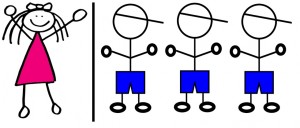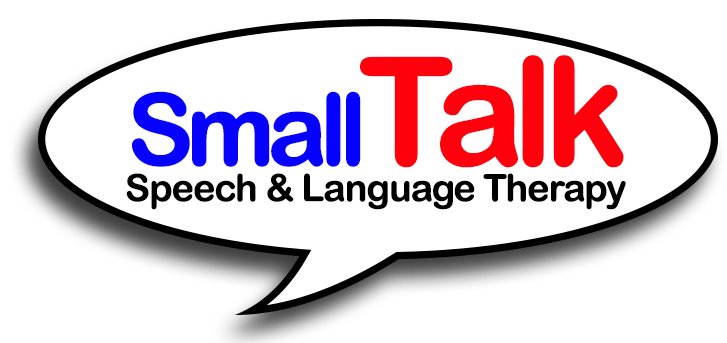What is stuttering?
Stuttering, or stammering, is a speech disorder where the person knows what they want to say but at the time may be unable to say it. It’s characterised by interruptions to the normal flow of speech. These speech disruptions can range from mild to severe, and stuttering may also be quite variable within individuals. For example, in preschool-age children, stuttering may come and go over days, weeks or months. How the child is feeling often impacts on the severity of the stutter, with it tending to become more significant when they are tired, excited, anxious or unwell. The onset of stuttering can be gradual or it may happen all of sudden.
Types of Stuttering
- Repetitions:
– of sounds (w-w-w-where)
– of syllables (It’s su-su-su-sunny today)
– of words (Can-can-can-can I have a drink?)
– of phrases (I want-I want-I want to play trains)
- A block is when a person is unable to say a sound at all. This is because the airflow, voice, and muscles involved in speech suddenly stop working together and become stuck. Blocks appear as a short pause before a word and may seem like a silent struggle to get the word out.
- Prolongations happen when a sound is stretched out at the beginning or in the middle of a word e.g. “Uuuuup” or “raaaabit”. The sound continues but the muscles involved in making speech can’t move.
- Other less obvious physical features of stuttering may include visible struggle or tension in a person’s face or body, increased eye blinking, head tilting, abnormal breathing, rising pitch, or tremors. Non-physical features may include avoidance of certain sounds, words or talking situations, frustration, embarrassment, anxiety, fear or anger.
What causes stuttering?
No one cause of stuttering has yet been identified, despite considerable research in this area. It is generally believed to be related to the neural activity (brain processing) that underlies speech production. For co-ordinated speech, your brain sends messages to your speech muscles very quickly and they move very quickly in response. Speech needs a very specific sequence of co-ordinated movements. For people who stutter, this sequence is often interrupted. Research does indicate a strong genetic link in stuttering; that is, it tends to run in families.
Click here to find out some Myths and Facts about stuttering.
Natural recovery
Stuttering is a fairly common speech disorder in preschool aged children. Approximately 5% of children between the ages of 2 to 6 years will start to stutter. Of this 5%, about 70% of these children will stop stuttering naturally (without the need for therapy). The problem is, there is no way to know which children will stop stuttering on their own and which will continue to stutter without therapy. It is important to begin treatment of stuttering sometime within 12 months of onset, and it is known that few children will have recovered without treatment by then. In the long term, stuttering may lead to difficulties with peer relationships, bullying and anxiety. Research also suggests that it can be harder to successfully treat stuttering if it is left until later in a child’s life.
Who does stuttering affect?
- Approximately three times as many boys as girls stutter
- Stuttering affects about 1% of the population. At least 200,000 people stutter in Australia
- Stuttering occurs across all cultures and backgrounds
Can stuttering be treated?
Yes! The good news is that there are effective stuttering treatments available. In Australia the most commonly used treatment for preschool aged children is the Lidcombe Program. This treatment is administered at home by the child’s parent and involves giving direct feedback about the child’s fluency. The philosophy behind the treatment is to provide an environment that optimises the child’s ability to speak fluently, and then to provide lots of positive feedback about their stutter-free speech.
There are two stages to the treatment. In Stage 1, parents attend weekly visits to the speech pathologist with their child to learn how to carry out the therapy program. At each session, the speech pathologist will adjust the program based on your child’s response to the therapy. Once the child’s stuttering either disappears or reaches a very low level, Stage 2 begins. The aim of Stage 2 is to maintain stutter-free speech for at least one year. The use of parent feedback during Stage 2 is reduced, as is the number of clinic visits, providing that stuttering remains at the low level it was at at the start of Stage 2. This maintenance part of the program is essential because it is well known that stuttering may reappear after a successful treatment.
What should I do if I think my child is stuttering?
If you think your child is stuttering it is recommended that you consult a speech pathologist. You will be able to discuss your concerns and decide in conjunction with the speech pathologist whether a formal assessment is appropriate. Following assessment, the speech pathologist will make a recommendation about whether therapy would be appropriate or not.
Dealing with stuttering
Stuttering can present a difficult situation for both the person who stutters and the listener. Hearing someone stutter may make you want to laugh, cry, speed the conversation up, or even leave the situation. Here are a few simple guidelines that can make the situation easier for you and the person who stutters:
- DON’T fill in words or finish sentences for the person who stutters. You don’t know for sure what they are going to say, and no one likes to be interrupted.
- DON’T tell the person to slow down, take a breath, or relax. These don’t help in the long run and make the problem seem simpler than it really is.
- DO listen to the content of the message, not how it is being said.
- DO let the person know you are listening through your body language and natural eye contact.
- DO slow down your conversational speaking rate, but don’t go so slowly that you sound unnatural. Slowing down lets the person know that you have time for them. It also helps them to talk at an appropriate rate, which in turn may help them be more fluent.
Hornsby, Hornsby Heights, Asquith, Mount Colah, Mount Kuring-gai, Mt Kuring-gai, Berowra, Waitara, Wahroonga, Warrawee, Normanhurst, Thornleigh, Westleigh, Pennant Hills
